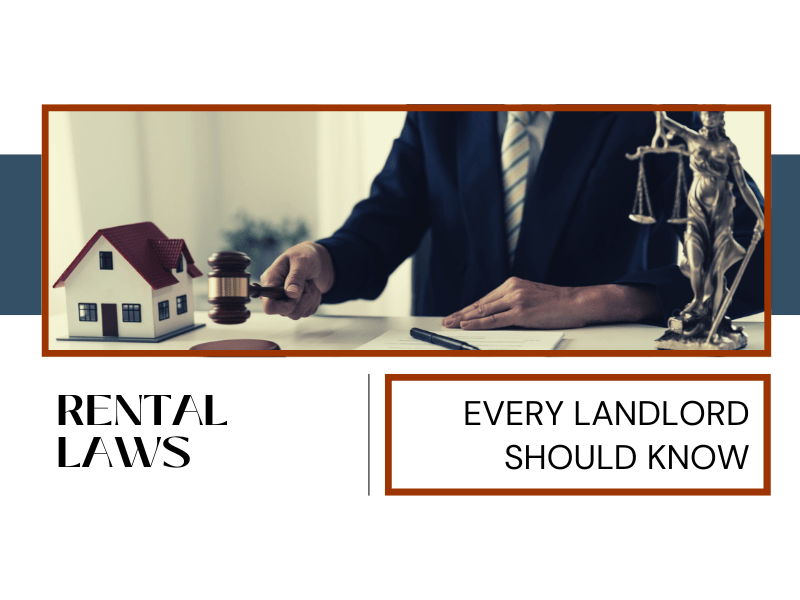
Making a legal mistake while renting out a property in Austin or anywhere in Texas can be expensive. The penalties for violating laws – even unintentionally – can be steep.
Federal laws that apply to fair housing and discrimination require your attention, and there is also an entire collection of state-specific laws that need to be followed. The Texas Property Code is what drives most of the requirements for landlords who are renting out a property. Familiarize yourself with these state laws and don’t forget to stay up to date with them.
You are likely not a lawyer, and if you find yourself unsure of what you’re required to do, we highly recommend you reach out to an Austin property management company. It’s our job to stay up to date on all of these state and federal laws and to keep the properties we manage in compliance.
Here are some of the Texas rental laws that every landlord needs to know.
Texas Property Code, Chapter 92
The part of the Texas Property Code that you really need to focus on as a rental property owner is Chapter 92. That’s where you’ll find all the regulations you must follow when it comes to renting out a home that’s safe and habitable.
Here are some of the especially important parts of that property code:
-
New Locks for New Tenants
You’ll have to re-key any locks on exterior doors before a new tenant moves in. You’d likely do this anyway, and it’s an important part of your turnover process. You don’t want your tenants moving into a home that someone else may be able to access. Even if you collected all the keys from your prior tenants, you can’t be sure if they made copies and handed them out to friends or family members.
A lot of homes today have digital keys or lockboxes that are opened with an app or a code. If that fits your rental property in Austin, make sure the combination is changed before a new tenant takes possession.
-
Deadbolts and Security Bars on Exterior Doors
Your exterior doors need new keys, and they also need deadbolts that lock from the inside without a key that someone could use on the outside. If you’re not prepared to install deadbolts, you’ll need to make sure the exterior doors have a ring bolt or drop bolt system. You could also install a metal bar across the inside of the door.
The Texas Property Code addresses sliding doors, too. Make sure there’s a working latch or security bar as well as a pin lock to keep tenants secure on the inside.
-
Install Peepholes on Exterior Doors
The Texas Property Code also requires a peephole or a viewer on any exterior doors that are not see-through glass doors. This allows tenants to see who is outside before they unlock their door.
-
Securing Windows
Windows must have at least one locking device, which is typically a latch or a sliding lock. You want to prevent windows from being opened from the outside.
-
Smoke detectors
Smoke detectors in your Austin rental property must be less than 8 years old, and you need to test them. Your smoke detector must be located in every bedroom and outside of every bedroom. A smoke detector in a hallway where there are several bedrooms will be fine. Every level of your home also needs a smoke detector.
Security Deposit Requirements for Austin Landlords
Security deposits can be tough to deal with. You collect them to cover yourself against the risk of unpaid rent and property damage. You cannot use them to pay for wear and tear or for general maintenance.
Texas does not restrict the amount you can collect in a security deposit.
When it comes to returning the deposit, you have 30 days from the date of move-out to return the money to your tenant. You should return the entire deposit to the forwarding address your tenant leaves behind unless you’re withholding money from the deposit for one of the following reasons:
- Your lease requires a specific notice period before tenants move out and they don’t give the appropriate notice. In this situation, you are permitted to keep the security deposit.
- There is damage left behind at the property that was not there when the tenants moved in. You can use all or part of the security deposit to pay for repairs and replacements.
- Rent or utility bills are unpaid.
Wear and tear issues are your responsibility as a rental property owner. When you deduct for damage, make sure you’re documenting that damage.
Evicting a Tenant from your Austin Rental Property
 Austin landlords are not permitted to take eviction matters into their own hands. You cannot change the locks or shut off the utilities or confront your tenant and throw them out.
Austin landlords are not permitted to take eviction matters into their own hands. You cannot change the locks or shut off the utilities or confront your tenant and throw them out.
You can evict a tenant for nonpayment of rent, lease violations that are not cured, or criminal activity going on in your property. Typically, if you’re going to evict, it will be for nonpayment of rent.
Here’s a brief overview of the legal eviction process in Texas:
- Serve your tenants a Three Day Notice to Pay or Vacate. This notice tells the tenant that rent has to be paid in three business days, or they need to move out. With the service of this notice, the tenants are informed that you will begin the formal eviction process if they refuse to pay or move out.
- File for eviction if the tenant does not respond.
- Go to court and obtain a judgment and Writ of Possession.
Once you prove your case, your tenants will be ordered out of the property, and you can begin to prepare it for new residents.
These are the most important laws you likely need to know as a landlord in Austin, but it’s not a complete list. To talk to our experts about what you need to do to protect yourself, please contact us at Austin Landmark Property Services, Inc., CRMC ® – A Certified Residential Management Company. We serve the Austin area and Central Texas including Travis, Williamson, Hays, Bastrop, and Bell counties.


 Mike Ebert
Mike Ebert Karen Ebert
Karen Ebert Marc Witmer
Marc Witmer Beth Ebert
Beth Ebert Mike Gonzales
Mike Gonzales Shelly Longoria
Shelly Longoria